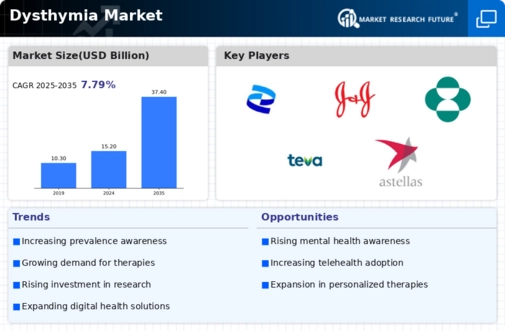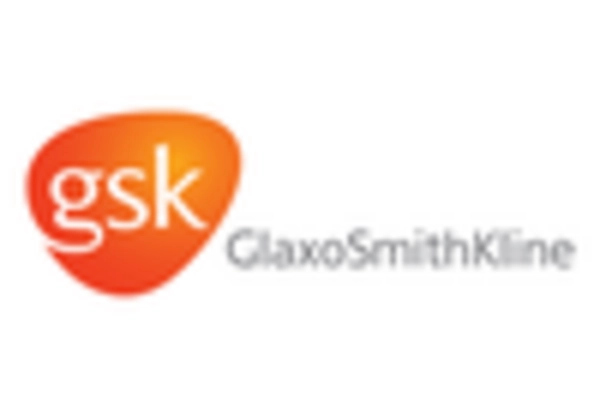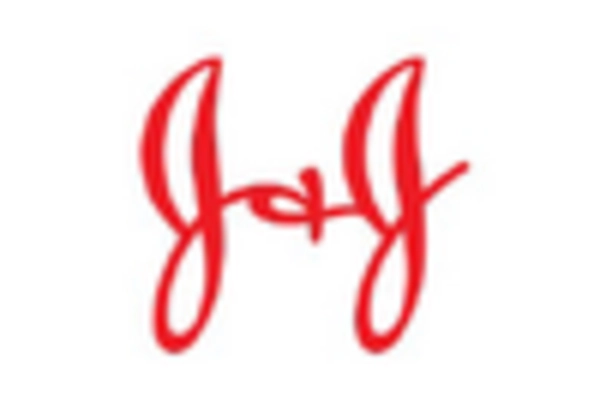Rising Prevalence of Dysthymia
The Dysthymia Market is experiencing a notable increase in the prevalence of dysthymia, a chronic form of depression. Recent estimates suggest that approximately 3.5% of the population may be affected by this condition at some point in their lives. This rising prevalence is likely to drive demand for effective treatment options, thereby expanding the market. As awareness of mental health issues continues to grow, more individuals are seeking help, which could lead to an increase in diagnosed cases. Furthermore, the recognition of dysthymia as a serious mental health concern by healthcare professionals may contribute to a more proactive approach in treatment, thus enhancing the overall market landscape.
Advancements in Treatment Modalities
Innovations in treatment modalities are significantly influencing the Dysthymia Market. The development of new pharmacological therapies, including novel antidepressants and combination therapies, appears to enhance treatment efficacy. Additionally, psychotherapeutic approaches, such as cognitive-behavioral therapy, are being tailored to address the specific needs of individuals with dysthymia. The introduction of these advanced treatment options may lead to improved patient outcomes and increased adherence to treatment regimens. As a result, the market is likely to witness a surge in demand for these innovative therapies, which could reshape the competitive landscape and provide new opportunities for stakeholders.
Integration of Digital Health Solutions
The integration of digital health solutions is transforming the Dysthymia Market. Telehealth platforms and mobile applications are becoming increasingly popular, providing patients with convenient access to mental health services. These digital solutions may facilitate remote consultations, therapy sessions, and medication management, thereby improving treatment adherence and patient engagement. As technology continues to evolve, the potential for personalized treatment plans through digital platforms could enhance the overall patient experience. This trend may lead to a broader acceptance of mental health care, ultimately driving growth in the market as more individuals seek assistance for dysthymia.
Increased Focus on Mental Health Policies
The Dysthymia Market is likely to benefit from an increased focus on mental health policies by various governments and organizations. Policymakers are recognizing the importance of mental health as a critical component of public health. This recognition is leading to the implementation of policies aimed at improving access to mental health services, including those for individuals suffering from dysthymia. Enhanced funding for mental health initiatives and the promotion of awareness campaigns may contribute to a more supportive environment for individuals seeking treatment. Consequently, this shift in policy focus could stimulate growth in the market, as more individuals are encouraged to seek help.
Growing Investment in Mental Health Research
Investment in mental health research is becoming increasingly prominent, which is likely to impact the Dysthymia Market positively. Governments and private organizations are allocating substantial funds to explore the underlying causes of dysthymia and develop effective interventions. This influx of funding may facilitate the discovery of new treatment options and enhance the understanding of the disorder. Moreover, as research progresses, it could lead to the establishment of evidence-based guidelines for the management of dysthymia, thereby improving treatment standards. The potential for breakthroughs in understanding and treating this condition may attract further investment, fostering growth within the market.


















Leave a Comment